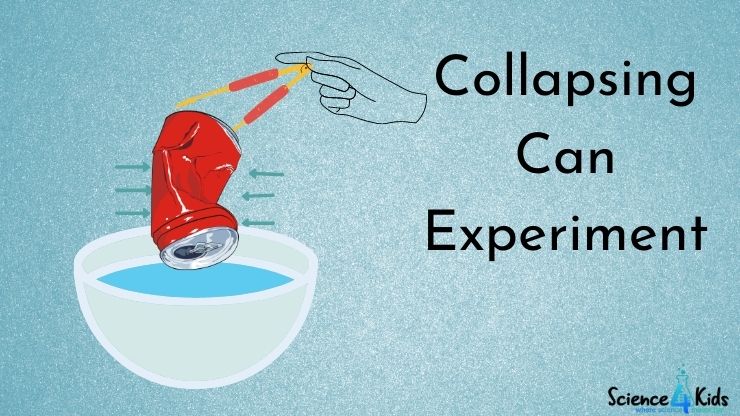Next time you buy a can of soda, don’t throw away the empty can. There is a fun science experiment that you can do with it. Crush the can, but without using your hands or feet. Let air do the work for you. Doesn’t it sound fun? You don’t need too many accessories for this can crush experiment. But you will need to use a heater. So it is good to take help from adults at home. Let us proceed.
What we need
Empty soda can (aluminum can)
Bowl with a wide mouth
Heater or stove
Tongs
Spoon
Water
Procedure

- Wash and clean the can to remove any leftover drink that might be inside it.
- Fill the bowl with cold water.
- Add a few spoons of water to the can. Do not pour too much water. You need just enough water to cover the bottom of the can.
- Keep the can over the heater and turn it on.
- After a short while, you will notice water vapor rising up from the opening of the can. You can also hear the bubbling sound of boiling water.
- Allow the water to boil for just a minute, and turn off the heater.
- Now is the time for real action. Lift the can from the heater using the tongs. (Get a good grip so that it doesn’t fall from your hands. Remember, it is still very hot)
- In a swift motion, flip the can upside down, and dip the mouth of the can into the bowl of cold water. (Do not immerse the can entirely into water)
- The can will instantly crush on its own! You did not apply any force over it. It just shrunk as though by magic.
What we learn
Can crush experiment was amazing indeed! Let us understand why the empty can shrunk when dipped in water. We all know that water turns into water vapor when boiled. We also know that hot air rises. So, as the water vapor rises, it heats the air above it, and pushes it out of the container. So there is very less air inside the heated can.
We swiftly dipped the can into cold water, which caused the water vapor inside the can to condense. This condensed vapor requires less space. As the mouth of the can is sealed by the water in the bowl, no more air can enter it. So a partial vacuum is created inside the can.
Since there is less air inside the can, the pressure exerted by the air inside is lesser than the pressure exerted by the air outside. The can shrunk due to the increased air pressure outside. So it did not crush on its own. It was air that caused it to crush.
You might be interested in another experiment that demonstrates air pressure. Read the Tabletop Fountain Experiment. You can even make your own barometer to check air pressure with the help of the Balloon Barometer Project.




